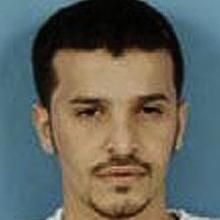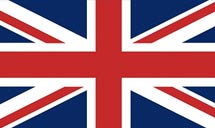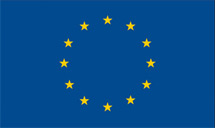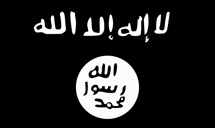Qasim al-Raymi
AQAP emir (leader), deceased
AQAP is the union of al-Qaeda’s affiliated branches in Saudi Arabia and Yemen. AQAP has claimed responsibility for terror attacks and plots worldwide, including the January 2015 Charlie Hebdo attacks in Paris.
July 31, 2025: The U.S. Department of State’s Rewards for Justice program offers a reward of up to $10 million for information leading to the capture of AQAP leader Sa’ad bin Atef al-Awlaki. Rewards for Justice previously offered $6 million on information on al-Awlaki on November 7, 2019.“Reward for Terrorist Sa'ad bin Atef al-Awlaki,” Voice of America, July 31, 2025, https://editorials.voa.gov/a/reward-for-terrorist-sa-ad-bin-atef-al-awlaki/8052540.html; “Sa’ad bin Atef al-Awlaki,” Rewards for Justice, accessed September 2, 2025, https://rewardsforjustice.net/rewards/saad-bin-atef-al-awlaki/; “U.S. State Department announces reward up to $10 million for two senior AQAP leaders,” Reuters, November 7, 2019, https://www.reuters.com/article/world/us-state-department-announces-reward-up-to-10-million-for-two-senior-aqap-lea-idUSKBN1XH2DX/.
Al-Qaeda in the Arabian Peninsula (AQAP) is the union of al-Qaeda’s branches in Saudi Arabia and Yemen. AQAP has carried out violent jihadist attacks both domestically and internationally in service of al-Qaeda’s ideology. Although the group carries out most of its attacks inside Yemen, AQAP is widely known for carrying out the fatal shooting at the Paris offices of French satirical magazine Charlie Hebdo in January 2015, as well as for its involvement in terrorist plots on U.S. soil, including the “Christmas Day Bomber” in 2009 and the “Times Square Bomber” in 2010.
After Yemeni President Ali Abdullah Saleh’s removal from office in early 2012, AQAP took advantage of the fractured political scene by establishing an insurgency in southern Yemen. Since Yemen descended into civil war in 2015, AQAP has benefited from the political vacuum by attempting to develop its own pseudo-state in the southern region. The civil war has coincidentally strengthened AQAP by causing Western forces to withdraw and the Yemeni and Saudi Arabia forces to focus on the opposing Houthi rebels.Katharine Zimmerman, “AQAP: A Resurgent Threat,” Combating Terrorism Center, September 11, 2015, https://www.ctc.usma.edu/posts/aqap-a-resurgent-threat. AQAP has been further strengthened by the material support its affiliates have received from the anti-Houthi coalition, as the coalition often turns a blind-eye to AQAP and its affiliates and regularly enters into alliances with the group.“Yemen’s al-Qaeda: Expanding the Base,” International Crisis Group, February 2, 2017, https://d2071andvip0wj.cloudfront.net/174-yemen-s-al-qaeda-expanding-the-base.pdf. In fact, three associates of the Saudi-backed President Mansour al-Hadi have appeared on a U.S. Treasury list of global terrorists for allegedly providing financial support to, and acting on behalf of, AQAP.“Yemen’s al-Qaeda: Expanding the Base,” International Crisis Group, February 2, 2017, https://d2071andvip0wj.cloudfront.net/174-yemen-s-al-qaeda-expanding-the-base.pdf. The United States responded with an expanded counterterrorism campaign, consisting primarily of drone strikes against AQAP leaders. An Associated Press investigation in August 2018 accused both the United Arab Emirates (UAE) and Saudi Arabia of integrating former AQAP fighters into their allied Yemeni forces. The report found that the UAE had paid local tribes, whose members were at the time allied with AQAP, in order to convince them to switch sides and help force out AQAP militants from those areas.Maggie Michael, “US official says UAE paid Yemen tribes to push al-Qaida out,” Washington Times, August 15, 2018, https://www.washingtontimes.com/news/2018/aug/15/us-official-says-uae-paid-yemen-tribes-to-push-al-/. Senior UAE commanders further confirmed that they recruited “many AQAP ‘fighters’ [who] were just young men under their [AQAP] control who were coerced or persuaded to take up arms.”Bel Trew, “Former al-Qaeda footsoldiers have been allowed into Yemen forces, admits UAE military,” Independent, August 16, 2018, https://www.independent.co.uk/news/world/middle-east/yemen-civil-war-al-qaeda-soldiers-uae-military-emirati-a8494481.html.
AQAP operates throughout Yemen, primarily in the country’s southern and central regions.Joshua Koontz, “AQAP’s Opportunism in Yemen: Benefit or Bust?,” Cipher Brief, November 16, 2016, https://www.thecipherbrief.com/column/agenda-setter/aqaps-opportunism-yemen-benefit-or-bust-1089;
“Yemen crisis: Who is fighting whom?,” BBC News, October 14, 2016, http://www.bbc.com/news/world-middle-east-29319423. In many of these provinces, AQAP governs small pockets of territory with sharia (Islamic law) courts and a heavily armed militia. AQAP attempts to appeal to the Yemeni people by meeting their basic needs and integrating into the local population, including by conforming to the local governance structures. According to a February 2017 report by the International Crisis Group, AQAP has successfully presented itself as “part of a wider Sunni front against Houthi expansion,” further providing the organization with local allies and room to operate in the country.“Yemen’s al-Qaeda: Expanding the Base,” International Crisis Group, February 2, 2017, https://d2071andvip0wj.cloudfront.net/174-yemen-s-al-qaeda-expanding-the-base.pdf. In addition to controlling territory in Yemen, AQAP is believed to pose a major terrorist threat to the United States.Katharine Zimmerman, “AQAP: A Resurgent Threat,” Combating Terrorism Center, September 11, 2015, https://www.ctc.usma.edu/posts/aqap-a-resurgent-threat;
Yara Bayoumy, Noah Browning, Mohammed Ghobari, “How Saudi Arabia’s war in Yemen has made al Qaeda stronger – and richer,” Reuters, April 8, 2016, http://www.reuters.com/investigates/special-report/yemen-aqap/. AQAP has also targeted the forces of the Southern Transitional Council (STC), the United Arab Emirates-backed faction fighting against Yemen’s Houthi rebels.“Suspected AQAP attack in Yemen kills 5 with links to secessionists,” Al Jazeera, August 1, 2023, https://www.aljazeera.com/news/2023/8/1/suspected-aqap-attack-in-yemen-kills-with-links-to-secessionists.
In the group’s inaugural video in 2009, AQAP’s former leader Nasir al-Wuhayshi announced the merging of al-Qaeda affiliates in Saudi Arabia and Yemen to form AQAP. In the video, Wuhayshi formally declared the group’s intention to avenge its enemies “with blood and destruction,” in order to establish an Islamic Caliphate and implement Sharia law.“Country Reports on Terrorism 2013,” U.S. Department of State, April 2014, http://www.state.gov/j/ct/rls/crt/2013/224829.htm.
Wuhayshi ended his opening speech with prayers tailored to AQAP’s goals:
“O Allah! Bring conquest over the Holy Mosque and the Haramain [highway from Mecca to Medina] by our hands! O Allah Give us the honor by establishing the Islamic State with our hands!”“Qaeda: English: “From Here We Begin…and at Al-Aqsa We Meet” World Analysis, February 19, 2009, http://worldanalysis.net/modules/news/article.php?storyid=212.
An AQAP document from 2012 expanded on these objectives. According to the document, AQAP’s primary goals are to “[e]xpel the Jews and Christians from the Arabian Peninsula” and “[e]stablish the Islamic Caliphate and Shari’ah rule which the apostate governments have suspended.”“Who Are the Mujahideen in the Arabian Peninsula?” Treadstone 71, last modified January 14, 2012, https://www.treadstone71.com/index.php/osint/osint-intel/free-whitepapers/view_document/34-who-are-the-mujahideen-of-the-arabian-peninsula.
In pursuing these ends, AQAP champions a violent interpretation of jihad and offers a number of ways Muslims can support its agenda, such as “[i]nform[ing] the Mujahideen [jihadists] about spies and the presence of Jews, Christians and the greatest criminals.” AQAP also encourages Muslims to “[b]e hostile to and hate the infidel” and “[r]aise children to love Jihad.”“Who Are the Mujahideen in the Arabian Peninsula?” Treadstone 71, last modified January 14, 2012, https://www.treadstone71.com/index.php/osint/osint-intel/free-whitepapers/view_document/34-who-are-the-mujahideen-of-the-arabian-peninsula.
As a formal affiliate of al-Qaeda, AQAP’s ideology and practices fall in line with al-Qaeda’s broader goals of working towards global Islamist domination. AQAP seeks to execute its Islamist mission through violent jihad, and is believed to be the al-Qaeda affiliate most ideologically similar to al-Qaeda’s core.Scott Stewart, “Al Qaeda’s Leadership in Yemen,” Stratfor, May 12, 2011, http://www.stratfor.com/weekly/20110511-al-qaeda-leadership-yemen#axzz3Q7H5gtWc.. Although the group is based in Yemen and Saudi Arabia, members have attempted to carry out terrorist plots worldwide.
According to a 2010 report from the think-tank New America, AQAP is “compartmentalized and hierarchical, with a distinct division of labor. It has a political leader who provides overall direction, a military chief to plan operational details, a propaganda wing that seeks to draw in recruits, and a religious branch that tries to justify attacks from a theological perspective while offering spiritual guidance.”Barak Barfi, “Yemen on the Brink?: The Resurgence of Al Qaeda in Yemen,” New America Foundation, January 2010, 2. http://www.newamerica.net/sites/newamerica.net/files/policydocs/Barfi.pdf.
Since mid-2017, however, AQAP has suffered from losses to its leadership and field commanders due to extensive Yemeni and international counterterrorism operations, according to the U.N. Analytical Support Sanctions Monitoring Team’s July 2018 report.U.N. Security Council, “Twenty-second report of the Analytical Support and Sanctions Monitoring Team submitted pursuant to resolution 2368 (2017) concerning ISIL (Da’esh), Al-Qaida and associated individuals and entities,” July 27, 2018, http://www.un.org/en/ga/search/view_doc.asp?symbol=S/2018/705&referer=/english/&Lang=E. Notably in late 2017, AQAP’s chief bomb maker Ibrahim al-Asiri was killed, creating an operational vacuum, as well as senior propagandist Abu Hajar al-Makki, severely disrupting the group’s propaganda efforts. Additionally, when senior cleric Ibrahim al-Rubaish was killed in 2015, AQAP left his position vacant before eventually appointing Yemeni jihadist Abdullah Mubarak to serve as the “new sharia official” more than two years later.Thomas Joscelyn, “Analysis: AQAP remains under pressure,” Long War Journal, May 26, 2018, https://www.longwarjournal.org/archives/2018/05/analysis-aqap-remains-under-pressure.php.
In 2011, AQAP created a domestic affiliate called Ansar al Sharia (AAS). According to the International Crisis Group, AAS serves as AQAP’s domestic insurgent arm, drawing in recruits who has been wary of AQAP, “which many Yemenis view as a regime instrument … and likely to trigger a military backlash.”“Yemen’s al-Qaeda: Expanding the Base,” International Crisis Group, Middle East Report N°174, February 2, 2017, https://d2071andvip0wj.cloudfront.net/174-yemen-s-al-qaeda-expanding-the-base.pdf.
Political branch
Khalid Batarfi headed AQAP until his alleged arrest by Yemeni forces on October 2, 2020.“Pro-ISIS Telegram Channel Alleges Al-Qaeda In The Arabian Peninsula (AQAP) Leader Khalid Batarfi Turned Himself In To Yemeni Forces In Al-Mahrah During Raid That Killed Two Key Al-Qaeda Commanders,” The Middle East Media Research Institute, October 7, 2020, https://www.memri.org/jttm/pro-isis-telegram-channel-alleges-al-qaeda-arabian-peninsula-aqap-leader-khalid-batarfi-turned; “Gulf of Aden Security Review,” Critical Threats, October 5, 2020, https://www.criticalthreats.org/briefs/gulf-of-aden-security-review/gulf-of-aden-security-review-october-5-2020#_edn4528c5682c5f4a0d107d760023177f711. AQAP later refuted reports of Batarfi’s arrest and featured him in a new video referencing events from January 2021.“Yemen al-Qaeda leader’s video belies UN report of capture,” Arab Weekly, February 11, 2021, https://thearabweekly.com/yemen-al-qaeda-leaders-video-belies-un-report-capture. Batarfi was named emir following the death of AQAP emir and co-founder, Qasim al-Raymi, in a U.S. drone strike in January 2020.Nikki Carvajal and Caroline Kelly, “White House announces death of terror leader Qassim al-Rimi,” CNN, February 7, 2020, https://www.cnn.com/2020/02/06/politics/white-house-announces-death-of-aqap-leader/index.html. Raymi filled this position on June 16, 2015, one day after former AQAP leader Nasir al-Wuhayshi died in a U.S. drone strike. Little is known about Raymi’s specific role, but it is suspected that he has inherited Wuhayshi’s responsibilities.“Designations of AQAP Leaders Qasim al-Rimi and Nayif al-Qahtani,” U.S. Department of State, May 11, 2010, http://www.state.gov/j/ct/rls/other/des/143206.htm; Khaled Wassef, “Al Qaeda’s new No. 1 in Yemen is no lackey,” CBS News, June 17, 2015, http://www.cbsnews.com/news/aqap-chief-qassem-al-rimi-is-no-lackey-to-fill-in-for-nasir-al-wuhayshi-killed-in-us-airstrike/; Jane Onyanga-Omara, “Al-Qaeda second-in-command killed in U.S. airstrike,” USA Today, June 17, 2015, http://www.usatoday.com/story/news/world/2015/06/16/al-qaeda-says-leader-killed/28796037/. Wuhayshi was responsible for directing AQAP’s entire program, as well as overseeing all of its individual branches. According to a classified U.S. State Department cable published by WikiLeaks, Wuhayshi’s duties specifically included “approving targets, recruiting new members, allocating resources to training and attack planning, and tasking others to carry out attacks.”“Public Library of US Diplomacy: Instruction for USUN to Request UN 1267 Listing of Al Qaida in the Arabian Peninsula and Top Leaders,” January 12, 2010, http://wikileaks.org/plusd/cables/10STATE2607_a.html/. In March 2024, AQAP announced Batarfi’s death without disclosing the circumstances of his demise. The group named AQAP veteran Sa’ad bin Atef al-Awlaki as his successor.David Gritten, “Al-Qaeda’s Yemen branch announces death of leader Khalid Batarfi,” BBC News, March 11, 2024, https://www.bbc.com/news/world-middle-east-68533649.
Military branch
The group’s military branch plans all of AQAP’s violent attacks, such as bomb and suicide missions, as well as guerilla attacks against the Yemeni government and military. It also organizes AQAP’s kidnapping operations and robberies. Crucial to AQAP’s military branch was its chief bomb maker, Ibrahim al-Asiri. Asiri was responsible for AQAP’s most high-profile bombing attempts, including the “Christmas Day Bomber” attempt in 2009 and the “Times Square Bomber” attempt in 2010. He was reportedly killed in a U.S. drone strike in late 2017.David Martin, “U.S. officials confident drone strike killed chief al Qaeda bomb maker,” CBS News, August 20, 2018, https://www.cbsnews.com/news/ibrahim-al-asiri-chief-al-qaeda-bomb-maker-killed-in-u-s-drone-strike/; Samuel Chamberlain, “Al Qaeda bomb maker killed in Yemen drone strike last year, US official confirms,” Fox News, August 20, 2018, http://www.foxnews.com/world/2018/08/20/al-qaeda-bomb-maker-killed-in-us-drone-strike-in-yemen-official-says.html. U.N. experts consider his death a serious setback to AQAP’s operational capabilities.U.N. Security Council, “Twenty-second report of the Analytical Support and Sanctions Monitoring Team submitted pursuant to resolution 2368 (2017) concerning ISIL (Da’esh), Al-Qaida and associated individuals and entities,” July 27, 2018, http://www.un.org/en/ga/search/view_doc.asp?symbol=S/2018/705&referer=/english/&Lang=E. In 2018, AQAP appointed several regional leaders as well as a new “military commander,” a lesser-known jihadist called Ammar al-San’ani.Thomas Joscelyn, “Analysis: AQAP remains under pressure,” Long War Journal, May 26, 2018, https://www.longwarjournal.org/archives/2018/05/analysis-aqap-remains-under-pressure.php.
Propaganda branch
AQAP relies heavily on its propaganda branch to attract recruits and build its base of support. This branch is also responsible for outreach beyond AQAP’s base in Yemen and Saudi Arabia. One of AQAP’s most notorious recruiters is Anwar al-Awlaki, who directed the “Christmas Day Bomber” in 2009Peter Finn, “Al-Awlaki Directed Christmas ‘Underwear Bomber’ Plot, Justice Department Memo Says,” Washington Post, February 10, 2012, http://www.washingtonpost.com/world/national-security/al-awlaki-directed-christmas-underwear-bomber-plot-justice-department-memo-says/2012/02/10/gIQArDOt4Q_story.html. and was linked to the Fort Hood shooter in 2009Larry Shaughnessy, “Hasan’s e-mail exchange with al-Awlaki; Islam, money and matchmaking,” CNN, July 20, 2012, http://security.blogs.cnn.com/2012/07/20/hasans-e-mail-exchange-with-al-awlaki-islam-money-and-matchmaking/. and the “Times Square Bomber” in 2010.Scott Shane and Mark Mazzetti, “Times Sq. Bomber Is Linked to Militant Cleric,” New York Times, May 6, 2010, http://www.nytimes.com/2010/05/07/world/middleeast/07awlaki-.html. AQAP has a media channel entitled “al-Malahem,” which has been called AQAP’s “official propaganda arm.”Thomas Joscelyn, “AQAP seeks to capitalize on anti-Israeli sentiment in new English-language magazine,” Long War Journal, August 17, 2014, http://www.longwarjournal.org/archives/2014/08/aqap_seeks_to_capita.php. Al-Malahem publishes a bi-monthly magazine in Arabic directed at its Yemeni audience, as well as an English-language periodical called Inspire directed at its Western audience.Thomas Joscelyn, “AQAP seeks to capitalize on anti-Israeli sentiment in new English-language magazine,” Long War Journal, August 17, 2014, http://www.longwarjournal.org/archives/2014/08/aqap_seeks_to_capita.php.
AQAP also publishes al-Masra, a digital newsletter that is released several times per month. Though al-Masra is produced by AQAP, it includes news updates on the entire al-Qaeda network. For recruitment purposes, al-Masra also provides al-Qaeda’s take on high-profile political developments in Western countries.William Watkison, “Al-Qaeda has used the Alton Sterling police shooting in latest magazine, say SITE,” International Business Times, July 8, 2016, http://www.ibtimes.co.uk/al-qaeda-uses-alton-sterling-police-shooting-latest-magazine-say-site-1569533?utm_source=yahoo&utm_medium=referral&utm_campaign=rss&utm_content=/rss/yahoous/news&yptr=yahoo;
Thomas Joscelyn, “Did al Qaeda exchange former Pakistani army chief’s son for Zawahiri’s daughters?,” Long War Journal, September 2, 2016, http://www.longwarjournal.org/archives/2016/09/did-al-qaeda-exchange-former-pakistani-army-chiefs-son-for-zawahiris-daughters.php.
According to U.S. Central Command (CENTCOM), in December 2017, the United States and its allies repeatedly targeted AQAP’s propaganda officials in counterterrorism operations, disrupting and reducing the group’s propaganda production capabilities. For example, al-Malahem lost its main propagandist, Abu Hajar al-Makki, in an airstrike in 2017, and al-Masra was unable to maintain its ability to produce three publications per month.Thomas Joscelyn, “Analysis: AQAP remains under pressure,” Long War Journal, May 26, 2018, https://www.longwarjournal.org/archives/2018/05/analysis-aqap-remains-under-pressure.php. In an attempt to revitalize AQAP’s media operations, al-Badr Media Foundation announced its presence online in May 2018. The media group aims to refute so-called rumors about AQAP—in particular those perpetuated by Western and Arab media, incite Muslims to join their cause, and increase “security awareness” among the group. On May 24, al-Badr released its first publication via Telegram, a collection of statements and tips on how to avoid detection by U.S. drones and surveillance measures.Thomas Joscelyn, “Analysis: AQAP remains under pressure,” Long War Journal, May 26, 2018, https://www.longwarjournal.org/archives/2018/05/analysis-aqap-remains-under-pressure.php.
Moreover, AQAP senior leader Khalid Batarfi, a prominent spokesperson, appears to have taken over the group’s propaganda operations to strengthen AQAP’s global portfolio.Thomas Joscelyn, “Analysis: AQAP remains under pressure,” Long War Journal, May 26, 2018, https://www.longwarjournal.org/archives/2018/05/analysis-aqap-remains-under-pressure.php. On February 23, 2020, following the death of former AQAP leader Qasim al-Raymi in a U.S. drone strike, AQAP confirmed that Batarfi was the group’s new leader.“Al-Qaida Confirms Death of AQAP Leader,” Voice of America, February 23, 2020, https://www.voanews.com/middle-east/al-qaida-confirms-death-aqap-leader. On October 2, Batarfi allegedly turned himself over to Yemeni forces following a Saudi-led raid in al-Mahrah.“Pro-ISIS Telegram Channel Alleges Al-Qaeda In The Arabian Peninsula (AQAP) Leader Khalid Batarfi Turned Himself In To Yemeni Forces In Al-Mahrah During Raid That Killed Two Key Al-Qaeda Commanders,” The Middle East Media Research Institute, October 7, 2020, https://www.memri.org/jttm/pro-isis-telegram-channel-alleges-al-qaeda-arabian-peninsula-aqap-leader-khalid-batarfi-turned; “Gulf of Aden Security Review,” Critical Threats, October 5, 2020, https://www.criticalthreats.org/briefs/gulf-of-aden-security-review/gulf-of-aden-security-review-october-5-2020#_edn4528c5682c5f4a0d107d760023177f711. A February 2021 U.N. report noted Batarfi’s arrest that October. However, U.S. military official cast doubt on reports of Batarfi’s arrest.Jared Szuba, “Updated: US disputes UN report on capture of Al-Qaeda’s top man in Yemen,” Al-Monitor, February 5, 2021, https://www.al-monitor.com/originals/2021/02/qaeda-yemen-capture-leader-un.html. In February 2021, AQAP released a new video featuring Batarfi and referencing events in January 2021.“Yemen al-Qaeda leader’s video belies UN report of capture,” Arab Weekly, February 11, 2021, https://thearabweekly.com/yemen-al-qaeda-leaders-video-belies-un-report-capture. An April 2021 AQAP statement outright accused the United Nations of lying about Batarfi.Bridget Johnson, “AQAP Calls UN Claim of Leader’s Arrest ‘Miserable Attempt to Wage a Psychological War,’” Homeland Security Today, April 12, 2021, https://www.hstoday.us/subject-matter-areas/counterterrorism/aqap-calls-un-claim-of-leaders-arrest-miserable-attempt-to-wage-a-psychological-war/. While AQAP has refuted news of Batarfi’s capture, there are reports that AQAP is not united behind his leadership. AQAP’s February 2020 statement announcing Batarfi’s appointment also stated the decision came amid a U.S. drone assault on the group’s leaders, preventing the group from consulting its entire leadership on the appointment. The inclusion of the statement suggests Batarfi may not have unanimous support.“Al-Qaida Confirms Death of AQAP Leader,” Voice of America, February 23, 2020, https://www.voanews.com/middle-east/al-qaida-confirms-death-aqap-leader; Gregory D. Johnsen, “Khalid Batarfi and the Future of AQAP,” Lawfare, March 22, 2020, https://www.lawfareblog.com/khalid-batarfi-and-future-aqap; “Disputes arise within AQAP ranks amid naming of a new emir,” Almasdar Online, February 25, 2020, https://al-masdaronline.net/national/387.
Religious branch
AQAP’s religious branch was headed by senior cleric and former Guantanamo detainee Ibrahim al-Rubaish. As “mufti” of AQAP, Rubaish carried the authority within AQAP to issue fatwas (religious rulings). Rubaish also released public statements in response to prominent religious clerics from around the world in order to advocate for AQAP’s behavior and seek to justify its violent ideology.“AQAP Officials Nadhari and Rubeish Denounce Slandering of Scholars,” SITE, July 7, 2014, http://ent.siteintelgroup.com/Multimedia/aqap-officials-nadhari-and-rubeish-denounce-slandering-of-scholars.html; “AQAP Ideologue Criticizes Latest Speech by King Abdullah of Saudi Arabia,” SITE, August 26, 2013, http://ent.siteintelgroup.com/Statements/aqap-ideologue-criticizes-latest-speech-by-king-abdullah-of-saudi-arabia.html; “AQAP Official Asks Scholar to Reconsider Fatwa Denouncing Group,” SITE, October 22, 2012, http://ent.siteintelgroup.com/Jihadist-News/aqap-official-asks-scholar-to-reconsider-fatwa-denouncing-group.html. In this way, AQAP’s religious branch serves as an extension of its propaganda branch. As AQAP anticipates the eventual institution of sharia (Islamic law), the group also maintains a designated religious expert. On April 13, 2015, AQAP confirmed that Rubaish was killed in a U.S. airstrike near the southern coastal city of Mukalla.“Targeting Al-Qaeda in Yemen,” Soufan Group, April 16, 2015, http://soufangroup.com/tsg-intelbrief-targeting-al-qaeda-in-yemen; Bill Roggio and Thomas Joscelyn, “AQAP announces death of sharia official in US drone strike,” Long War Journal, April 14, 2015, http://www.longwarjournal.org/archives/2015/04/aqap-announces-death-of-sharia-official-in-us-drone-strike.php. Nearly two years later, AQAP’s emir Qasim al-Raymi appointed Abdullah Mubarak, a Yemeni jihadist, as AQAP’s “new sharia official.”Thomas Joscelyn, “Analysis: AQAP remains under pressure,” Long War Journal, May 26, 2018, https://www.longwarjournal.org/archives/2018/05/analysis-aqap-remains-under-pressure.php.
According to the U.S. State Department, AQAP’s funding comes primarily from “theft, robberies, oil and gas revenue, kidnap-for-ransom operations, and donations from like-minded supporters.”“Country Report on Terrorism 2017,” U.S. Department of State, accessed October 25, 2018, https://www.state.gov/j/ct/rls/crt/2017/282850.htm.
In a 2012 letter to Algerian allies, AQAP founder Nasir al-Wuhayshi wrote that “most of the battle costs, if not all, were paid for through the spoils. Almost half the spoils [for a year-long operation in Yemen] came from hostages.” Wuhayshi then called kidnapping “an easy spoil, which I may describe as a profitable trade and a precious treasure.”Rukmini Kalamachi, “Yemen Terror Boss Left Blueprint for Waging Jihad,” Associated Press, August 9, 2013, http://www.ap.org/Content/AP-In-The-News/2013/Yemen-terror-boss-left-blueprint-for-waging-jihad. Between 2011 and 2013, AQAP received approximately $30 million in ransom payments.Yaya J. Fanusie, Alex Entz, “Terror Finance Briefing Book” Foundation for Defense of Democracies, July 2017, https://s3.us-east-2.amazonaws.com/defenddemocracy/uploads/documents/CSIF_TFBB_AQAP_web.pdf.
In addition to taking hostages, AQAP relies heavily on heists and armed robberies. In August 2009, WikiLeaks revealed that suspected AQAP members stole an estimated $500,000 in a single heist.“09SANAA1632, AQAP Lifts $500K in Aden Heist?” WikiLeaks, September 2, 2009, http://wikileaks.org/cable/2009/09/09SANAA1632.html. There have also been reports of AQAP partaking in gun and drug smuggling, as well as local sex trafficking through forced marriages.Yaya J. Fanusie, Alex Entz, “Terror Finance Briefing Book” Foundation for Defense of Democracies, July 2017, https://s3.us-east-2.amazonaws.com/defenddemocracy/uploads/documents/CSIF_TFBB_AQAP_web.pdf. According to Yemeni analyst Ahmad Abd Allah al-Sufi, the group has trafficked opium.Barak Barfi, “Yemen on the Brink? The Resurgence of Al Qaeda in Yemen,” New America Foundation, January 2010, 2, http://www.newamerica.net/sites/newamerica.net/files/policydocs/Barfi.pdf.
AQAP held Yemen’s third-largest port from April 2015 to April 2016, which allegedly generated millions of dollars for the group. The southeastern Yemeni port city of Mukalla purportedly housed 1,000 AQAP fighters, who controlled nearly 375 miles of the coastline. According to Yemeni officials and local tribal leaders, AQAP fighters patrolled the waters off its controlled coast and imposed taxes and tariffs on passing ships.Yara Bayoumy, Noah Browning, Mohammed Ghobari, “How Saudi Arabia’s war in Yemen has made al Qaeda stronger – and richer,” Reuters, April 8, 2016, http://www.reuters.com/investigates/special-report/yemen-aqap/. In this way, the terrorist group has reportedly generated between another two to five million a day from its port revenue.Yara Bayoumy, Noah Browning, Mohammed Ghobari, “How Saudi Arabia’s war in Yemen has made al Qaeda stronger – and richer,” Reuters, April 8, 2016, http://www.reuters.com/investigates/special-report/yemen-aqap/. The Mukalla port, which has since been seized by forces from the United Arab Emirates, also reportedly functions as a hub for smuggling fuel.Yara Bayoumy, Noah Browning, Mohammed Ghobari, “How Saudi Arabia’s war in Yemen has made al Qaeda stronger – and richer,” Reuters, April 8, 2016, http://www.reuters.com/investigates/special-report/yemen-aqap/.
AQAP has stolen from numerous banks across Yemen. While AQAP held Mukalla, the militants looted the city’s central bank branch, netting an estimated $100 million.Yaya J. Fanusie, Alex Entz, “Terror Finance Briefing Book” Foundation for Defense of Democracies, July 2017, https://s3.us-east-2.amazonaws.com/defenddemocracy/uploads/documents/CSIF_TFBB_AQAP_web.pdf; Michael Horton, “Fighting the Long War: The Evolution of al-Qa`ida in the Arabian Peninsula,” CTC Sentinal: Volume 10/Issue 1, January 2017, https://ctc.usma.edu/fighting-the-long-war-the-evolution-of-al-qaida-in-the-arabian-peninsula/. According to Yemeni security officials, the looting represented AQAP’s “biggest financial gain to date” and was “enough to fund them at the level they have been operating at for at least another 10 years.”Yara Bayoumy, Noah Browning, and Mohammed Ghobari, “How Saudi Arabia’s war in Yemen made al Qaeda stronger – and richer,” Reuters, April 8, 2016, http://www.reuters.com/investigates/special-report/yemen-aqap/. This access to additional sources of revenue discontinued when Yemeni government forces retook control of Mukalla in April 2016.“Country Report on Terrorism 2017,” U.S. Department of State, accessed October 25, 2018, https://www.state.gov/j/ct/rls/crt/2017/282850.htm.
As a result of AQAP’s violent operations, the group is largely self-funded.“Al-Qa’ida in the Arabian Peninsula (AQAP),” Australian National Security, accessed January 28, 2015, http://www.nationalsecurity.gov.au/Listedterroristorganisations/Pages/Al-QaidaintheArabianPeninsulaAQAP.aspx. However, another source of AQAP funding is donations from fraudulent charitiesYaya J. Fanusie, Alex Entz, “Terror Finance Briefing Book” Foundation for Defense of Democracies, July 2017, https://s3.us-east-2.amazonaws.com/defenddemocracy/uploads/documents/CSIF_TFBB_AQAP_web.pdf. and “like-minded supporters,”“Country Report on Terrorism 2013,” U.S. Department of State, April 2014, http://www.state.gov/j/ct/rls/crt/2013/224829.htm. most of whom are reportedly Saudi nationals.Barak Barfi, “Yemen on the Brink? The Resurgence of Al Qaeda in Yemen,” New America Foundation, January 2010, 2, http://www.newamerica.net/sites/newamerica.net/files/policydocs/Barfi.pdf.
AQAP has turned to print, digital, and social media to bolster recruitment.
In 2010, AQAP launched an English online magazine, Inspire, to reach Western sympathizers and potential recruits. Inspire answers questions about AQAP and its mission and how to support them, from building homemade bombs to calls for lone wolf attacks in the United States. Analyst Gregory Johnsen has said that Inspire helps AQAP “reach, influence and inspire other like-minded individuals in the west. No longer do these individuals need to travel to Yemen or read Arabic in order to take instructions from AQAP. Now they can just download and read the magazine in English.”Michelle Shephard, “Al Qaeda branch inspired to launch English magazine,” Toronto Star, June 29, 2010, http://www.thestar.com/news/world/2010/06/29/al_qaeda_branch_inspired_to_launch_english_magazine.html.
Inspire’s first issue in July 2010 included an article titled, “Make a Bomb in the Kitchen of Your Mom,” which described how to make a bomb using everyday items.Lee Keath, “Pressure cooker bombs used in past by militants,” Associated Press, April 16, 2013, http://bigstory.ap.org/article/pressure-cooker-bombs-used-past-militants; Richard Spencer, “Al-Qaeda newspaper: Make a bomb in the kitchen of your mom,” Telegraph [U.K.], July 1, 2010, http://www.telegraph.co.uk/news/worldnews/7865978/Al-Qaeda-newspaper-Make-a-bomb-in-the-kitchen-of-your-mom.html. The August 2014 issue contained a nine-page guide on how to make car bombs, and suggested terror targets in the United Kingdom and the United States.Josie Ensor, “Al-Qaeda manual encourages attacks on high street stores in UK,” Telegraph (London), August 29, 2014, http://www.telegraph.co.uk/news/worldnews/al-qaeda/11062765/Al-Qaeda-manual-encourages-attacks-on-high-street-stores-in-UK.html. Its December 2014 issue featured instructions on how to make a bomb that could evade airport security. The July 2017 issue elaborated on targeting public transportation as well as train derailing operations. It also analyzed recent lone jihad operations in Western countries—such as the 2016 Nice attack in France that killed 86 people—and referenced lessons learned. AQAP also highlighted these attacks in a series of five publications called “Inspire Guide.”“New release from al-Qā’idah in the Arabian Peninsula: “Inspire Guide #5: The British Parliament Operation in London”.” Jihadology, April 7, 2017, https://jihadology.net/2017/04/07/new-release-from-al-qaidah-in-the-arabian-peninsula-inspire-guide-5-the-british-parliament-operation-in-london/; “Inspire Magazine,” Jihadology, accessed November 7, 2018, https://jihadology.net/category/inspire-magazine/. In May 2017, AQAP released a video message of Qasim al-Raymi encouraging lone wolf attacks in the West—the first using the “Inspire Address” banner.“New video message from al-Qā’idah in the Arabian Peninsula’s Shaykh Qāsim al-Raymī: ‘An Inspire Address #1: A Lone Mujāhid or An Army By Itself’,” Jihadology, May 7, 2017, https://jihadology.net/2017/05/07/new-video-message-from-al-qaidah-in-the-arabian-peninsulas-shaykh-qasim-al-raymi-an-inspire-address-1-a-lone-mujahid-or-an-army-by-itself/.
In 2012, AQAP released a recruitment guide called Expectations Full, primarily written by Samir Khan, the late editor of Inspire. The guide calls on potential Western-based recruits to forgo traveling to the region and requests they instead target America.Paul Cruickshank and Adam Levine, “Wage Jihad at Home, Not in Yemen, Al Qaeda Urges Recruits,” CNN Security Clearance, May 16, 2012, http://security.blogs.cnn.com/2012/05/16/wage-jihad-at-home-not-in-yemen-al-qaeda-urges-recruits/. According to the guide, “attacking the enemy in their backyard” is one of the most helpful missions recruits can undertake, even more than fighting together with AQAP in Yemen.Paul Cruickshank and Adam Levine, “Wage Jihad at Home, Not in Yemen, Al Qaeda Urges Recruits,” CNN Security Clearance, May 16, 2012, http://security.blogs.cnn.com/2012/05/16/wage-jihad-at-home-not-in-yemen-al-qaeda-urges-recruits/.
AQAP turned to social media in 2012, posting messages on jihadist websites and forums to attract western recruits. One Arabic-language message on the Shumukh and al-Fidaa jihadist forums, posted by a user claiming to be a member of AQAP’s military committee, calls on recruits to launch suicide missions in their home countries. According to the post, “individual jihad or the so-called lone wolf has become popular.”Paul Cruickshank, “Al Qaeda in Yemen Advertises for Western Recruits,” CNN, June 11, 2012, http://www.cnn.com/2012/06/11/world/meast/yemen-al-qaeda/. The messages provide email addresses for recruits to contact AQAP.
In recent years, AQAP has continued to exploit the opportunities for recruitment provided by social media sites. On Twitter, for example, as soon as an AQAP account is shut down, another emerges almost immediately, typically using a new name (“handle”) with one character amended. In November 2014, AQAP even launched its own “AMA” (Ask Me Anything) Twitter account, providing official answers to questions such as “Why haven’t there been further AQAP attacks inside the US? Why don’t you move the war from Yemen to US soil?” The job of resolving such queries from prospective jihadists falls to Nasser bin Ali al-Ansi, the AQAP senior official who claimed responsibility for the Charlie Hebdo attack in January 2015.Jeremy Scahill, “AQAP Develops Its Own Version Of Reddit’s AMA and Twitter’s Blue Checkmark Verification,” Intercept, January 23, 2015, https://firstlook.org/theintercept/2015/01/23/aqap-develops-version-reddits-ama-twitters-blue-checkmark-verification/; “Al Qaida in Yemen uses video to claim responsibility for Charlie Hebdo attack,” Guardian (London), January 14, 2015, http://www.theguardian.com/world/2015/jan/14/al-qaida-claims-responsibility-charlie-hebdo-attack-paris.
According to one spy who infiltrated AQAP, the group is increasingly demanding that prospective recruits coming to Yemen, Oman, Syria, and other Middle Eastern states have clean passports and clean names. Anyone who is suspected of being subject to government surveillance is excluded from the recruitment net.Paul Cruickshank and Barbara Starr, “U.S. working assumption: AQAP ordered Said Kouachi to carry out an attack,” CNN, January 11, 2015, http://www.cnn.com/2015/01/11/europe/said-koauchi-al-qaeda-orders/.
Since ISIS established its own affiliate branch in Yemen in November 2014, AQAP and ISIS have competed for recruits and influence, each seeking to dominate the Salafi-jihadist movement in Yemen.“The Islamic State Will Linger in Yemen,” Stratfor, March 14, 2016, https://www.stratfor.com/image/islamic-state-will-linger-yemen;
Katherine Zimmerman and Jon Diamond, “Challenging the Yemeni State: ISIS in Aden and Al Mukalla,” Critical Threats, June 9, 2016, http://www.criticalthreats.org/yemen/zimmerman-diamond-challenging-yemeni-state-isis-in-aden-al-mukalla-june-9-2016. According to Yemeni officials, a “real competition” developed between the groups in 2015, despite the fact that AQAP supporters numbered in the hundreds and ISIS supporters only in the dozens.Brian Todd, “ISIS Gaining Ground in Yemen, Competing With Al Qaeda,” CNN, January 22, 2015, http://www.cnn.com/2015/01/21/politics/isis-gaining-ground-in-yemen/. Some AQAP cells have reportedly switched allegiance to ISIS due to factors such as ISIS's global reputation for victory and a higher pay rate.Katherine Zimmerman and Jon Diamond, “Challenging the Yemeni State: ISIS in Aden and Al Mukalla,” Critical Threats, June 9, 2016, http://www.criticalthreats.org/yemen/zimmerman-diamond-challenging-yemeni-state-isis-in-aden-al-mukalla-june-9-2016.
Since the start of 2015, AQAP has been seizing territory throughout southern Yemen and providing public services to the local population. As a result of the Yemeni insurgency, many of the southern regions’ security forces have left to fight alongside the coalition forces against the Houthi rebels in the north. AQAP has been attempting to fill the political vacuum to reportedly gain the trust of the southern population. In late March 2015, AQAP unveiled a new well in Yemen’s southern, arid Hadramaut region. According to Middle East analyst Thomas Joscelyn, AQAP attempts to embed itself in the local population as opposed to gaining their submission through brutal violence, as ISIS has done in its strongholds in Iraq and Syria.Alessandria Masi, “Al Qaeda Winning Hearts and Minds Over ISIS In Yemen With Social Services,” International Business Times, April, 7, 2016, http://www.ibtimes.com/al-qaeda-winning-hearts-minds-over-isis-yemen-social-services-2346835;
Katharine Zimmerman, “AQAP: A Resurgent Threat,” Combating Terrorism Center, September 11, 2015, https://www.ctc.usma.edu/posts/aqap-a-resurgent-threat. AQAP has reportedly constructed bridges, dug wells, built roads, and provided humanitarian assistance throughout the southern region and has highlighted these efforts on its social media accounts and in its Arabic-language propaganda magazine, al-Masra.Alessandria Masi, “Al Qaeda Winning Hearts and Minds Over ISIS In Yemen With Social Services,” International Business Times, April, 7, 2016, http://www.ibtimes.com/al-qaeda-winning-hearts-minds-over-isis-yemen-social-services-2346835. According to Jamestown Foundation analyst Michael Horton, AQAP’s “more covert strategy” has enabled it “to expand its ties to local communities and to further enmesh itself within some forces battling the Houthis and their allies.”Michael Horton, “Fighting the Long War: The Evolution of al-Qa`ida in the Arabian Peninsula,” CTC Sentinal: Volume 10/Issue 1, January 2017, https://ctc.usma.edu/fighting-the-long-war-the-evolution-of-al-qaida-in-the-arabian-peninsula/. Nonetheless, AQAP has also resorted to cash payments in exchange for support after the it seized control of Mukalla in April 2015.Michael Horton, “Fighting the Long War: The Evolution of al-Qa`ida in the Arabian Peninsula,” CTC Sentinal: Volume 10/Issue 1, January 2017, https://ctc.usma.edu/fighting-the-long-war-the-evolution-of-al-qaida-in-the-arabian-peninsula/.
According to the U.N. experts, AQAP had an estimated 6,000 to 7,000 fighters in Yemen in 2018, representing an increase from U.S. estimates in 2017 of “the low thousands.”U.N. Security Council, “Twenty-second report of the Analytical Support and Sanctions Monitoring Team submitted pursuant to resolution 2368 (2017) concerning ISIL (Da’esh), Al-Qaida and associated individuals and entities,” July 27, 2018, http://www.un.org/en/ga/search/view_doc.asp?symbol=S/2018/705&referer=/english/&Lang=E; “Country Report on Terrorism 2017,” U.S. Department of State, accessed October 25, 2018, https://www.state.gov/j/ct/rls/crt/2017/282850.htm. Dr. Gregory Johnsen, member of the U.N. Security Council’s Panel of Experts on Yemen, notes that while the latest membership figures are accurate, they can be misleading. Even though AQAP’s domestic insurgency has recorded an influx of recruits, the terror group has not increased as a threat to the West. He stated: “Contrary to the picture painted by the numbers, AQAP is the weakest it has ever been. Decimated by drone strikes and challenged by rivals, its international terrorist side is a shadow of its former self. Only its domestic insurgency side—bolstered by Yemen’s messy war—is growing.”Gregory D. Johnsen, “The two faces of Al-Qaeda in the Arabian Peninsula,” War on the Rocks, October 11, 2018, https://warontherocks.com/2018/10/the-two-faces-of-al-qaeda-in-the-arabian-peninsula/.
AQAP’s numbers depleted in the ensuing years after the 2018 report. A February 2022 report by the United Nations’ Analytical Support and Sanctions Monitoring Team to the U.N. Security Council estimated AQAP maintains approximately 3,000 fighters is suffering from internal disputes and military offensives but nonetheless continues to present a “significant threat.”“Letter dated 3 February 2022 from the Chair of the Security Council Committee pursuant to resolutions 1267 (1999), 1989 (2011) and 2253 (2015) concerning Islamic State in Iraq and the Levant (Da’esh), Al-Qaida and associated individuals, groups, undertakings and entities addressed to the President of the Security Council,” United Nations, February 3, 2022, 13, https://undocs.org/S/2022/83. According to the monitoring team, there were no reports of significant numbers of foreign terrorist fighters arriving in Yemen to replenish AQAP’s ranks, with the exception of limited numbers of African migrants recruited to entry-level positions. The monitoring team reported AQAP is also reluctant to welcome largescale migrant recruitment because of prior infiltration attempts. The report noted AQAP retains its leading role in distributing al-Qaeda propaganda to supporters and potential recruits. Further, AQAP is consolidating its foothold in Yemen’s central and eastern provinces. The report charged AQAP is exploiting Yemen’s civil war to relocate its territorial base to the southern provinces of Abyan, Bayda, and Shabwa, as well as the eastern provinces of Hadramout and Mahrah.“Letter dated 3 February 2022 from the Chair of the Security Council Committee pursuant to resolutions 1267 (1999), 1989 (2011) and 2253 (2015) concerning Islamic State in Iraq and the Levant (Da’esh), Al-Qaida and associated individuals, groups, undertakings and entities addressed to the President of the Security Council,” United Nations, February 3, 2022, 13, https://undocs.org/S/2022/83.
Al-Malahim Media Foundation
Al-Malahim Media Foundation has been AQAP’s propaganda outlet since 2008, releasing videos and publicationsJames Paterson, “Al-Qaeda as a spatial orientated movement: interactions between transnational and local jihadism,” Small Wars & Insurgencies (2024): 1-25; David Knoll, “Al-Qaeda in the Arabian Peninsula (AQAP): An Al-Qaeda Affiliate Case Study,” CNA, October 2017, https://www.cna.org/archive/CNA_Files/pdf/dim-2017-u-016116-2rev.pdf. Through this media arm, AQAP releases publications such as Sada al Malahim (Echoes of Epics), which was founded by the late AQAP senior propagandist Abu Hammam Qahtani in January 2008.Bill Roggio,” Founder of AQAP’s media arm killed in clash in Yemen,” Long War Journal, December 22, 2010, https://www.longwarjournal.org/archives/2010/12/founder_of_aqaps_med.php; David Knoll, “Al-Qaeda in the Arabian Peninsula (AQAP): An Al-Qaeda Affiliate Case Study,” CNA, October 2017, https://www.cna.org/archive/CNA_Files/pdf/dim-2017-u-016116-2rev.pdf. Other publications distributed by the media arm include Inspire, AQAP’s English-language magazine that was first released in June 2010.Bill Roggio,” Founder of AQAP’s media arm killed in clash in Yemen,” Long War Journal, December 22, 2010, https://www.longwarjournal.org/archives/2010/12/founder_of_aqaps_med.php; David Knoll, “Al-Qaeda in the Arabian Peninsula (AQAP): An Al-Qaeda Affiliate Case Study,” CNA, October 2017, https://www.cna.org/archive/CNA_Files/pdf/dim-2017-u-016116-2rev.pdf. Following Qahtani’s death in combat with Yemeni security forces in December 2010, Abu Hajar al-Makki became AQAP’s propaganda chief. He was ultimately killed in an American drone strike in December 2017.Bill Roggio,” Founder of AQAP’s media arm killed in clash in Yemen,” Long War Journal, December 22, 2010, https://www.longwarjournal.org/archives/2010/12/founder_of_aqaps_med.php; Thomas Joscelyn, “AQAP propaganda official reportedly killed in US drone strike,” Long War Journal, December 22, 2017, https://www.longwarjournal.org/archives/2017/12/aqap-propaganda-official-reportedly-killed-in-us-drone-strike.php. Al-Malahim Media Foundation focuses on Western targets throughout their messages. It is one of the strongest propaganda arms within the al-Qaeda network.James Paterson, “Al-Qaeda as a spatial orientated movement: interactions between transnational and local jihadism,” Small Wars & Insurgencies (2024): 1-25; “‘Underwear Bomber’ Umar Farouk Abdulmutallab Pleads Guilty,” Federal Bureau of Investigation, October 12, 2011, https://archives.fbi.gov/archives/detroit/press-releases/2011/underwear-bomber-umar-farouk-abdulmutallab-pleads-guilty; Patricia Wen, “Tsarnaev posted radical messages on second Twitter account, FBI agent testifies,” Boston Globe, March 10, 2015, https://www.bostonglobe.com/metro/2015/03/09/tsarnaev-had-second-secret-twitter-account-witness-testifies/lgiJqqmXlD3ua8HmFLnAZO/story.html; David Johnston and Scott Shane, “U.S. Knew of Suspect’s Tie to Radical Cleric,” New York Times, November 9, 2009, http://www.nytimes.com/2009/11/10/us/10inquire.html;
Larry Shaughnessy, “Hasan’s E-mail Exchange with al-Awlaki; Islam, Money and Matchmaking,” CNN Security Clearance, July 20, 2012, http://security.blogs.cnn.com/2012/07/20/hasans-e-mail-exchange-with-al-awlaki-islam-money-and-matchmaking/.
Following the onset of Hamas’s war on Israel in October 2023, AQAP boosted propaganda efforts to recruit new supporters in its campaigns against Israel and its allies. On December 29, 2023, AQAP released a video via its recently relaunched magazine Sada al-Malahim. The video, modeled after the content featured throughout Inspire magazine, encouraged lone-wolf attacks against the West. The video featured imagery from Gaza taken during Hamas’s war on Israel. AQAP also urged al-Qaeda supporters to wage jihad against targets such as “civil aviation”—such as United, Continental, British Airways, and other airlines—and “American economy high-profile personalities,” including Elon Musk and Bill Gates. The video further emphasized that supporters must clearly state the purpose of their actions when claiming responsibility to reinforce the legitimacy of AQAP’s violent campaign. Additional footage included guidance on how to conceal bombs and the best places to trigger explosions on a plane.“Briefing: Al-Qaeda's 'Inspire' video urges attacks in the West to avenge Gaza,” BBC Monitoring, December 30, 2023, https://monitoring.bbc.co.uk/product/c204vobb.
AQAP’s primary stronghold is located in the al-Mahfad area of the Abyan Province in southern Yemen.Bill Roggio and Oren Adaki, “US drone strike hits AQAP training camp in southern Yemen,” Long War Journal, April 1, 2014, http://www.longwarjournal.org/archives/2014/04/us_drone_strike_kill_25.php;
Mohammed al Qalisi and Taimur Khan, “Coalition in new assault on Al Qaeda in Yemen,” National (Dubai), April 23, 2016, http://www.thenational.ae/world/middle-east/coalition-in-new-assault-on-al-qaeda-in-yemen;
Saeed Al-Batati, Kareem Fahim, and Eric Schmitt, “Yemeni Troops, backed by United Arab Emirates, Take City From Al Qaeda,” New York Times, April 24, 2016, http://www.nytimes.com/2016/04/25/world/middleeast/yemeni-troops-backed-by-united-arab-emirates-take-city-from-al-qaeda.html. In May 2014, a Yemeni official remarked that AQAP training camps were the “most active” in the al-Mahfad region.Mohammed Mukhashaf, “Yemeni army kills 13 al Qaeda fighters, including one Uzbek,” Reuters, May 1, 2014, http://www.reuters.com/article/2014/05/01/us-yemen-army-idUSBREA400MY20140501. AQAP training camps also operate in the governorates of Shabwa, Hadramawt, and Marib.“Profile: Al-Qaeda in the Arabian Peninsula,” BBC News, last modified September 11, 2012, http://www.bbc.com/news/world-middle-east-11483095.
On July 14, 2016, AQAP released a video showing its so-called special forces training at the Hamza al Zinjibari training camp in southern Yemen. The video depicts AQAP fighters conducting weapons training, physical workouts, live fire scenarios, and martial arts training. Senior AQAP member and former Guantanamo Bay detainee Ibrahim al-Qosi was highlighted in the film stating “thousands of” AQAP fighters have been trained in these types of camps, which has “had a clear impact in different jihadi fronts.”Bill Roggio and Caleb Weiss, “AQAP details ‘special forces’ training camp,” Long War Journal, July 14, 2016, http://www.longwarjournal.org/archives/2016/07/aqap-details-special-forces-training-camp.php. The video also exhibits the militants’ abilities to conduct assaults and kidnappings using SUVs and motorcycles.
Said Kouachi, one of the perpetrators of the January 2015 attack on Charlie Hebdo's offices in Paris, trained with AQAP in Yemen between 2009 and 2011.David Gauthier-Villars, Noemie Bisserbe, and Julian E. Barnes, “Suspect in Charlie Hebdo Attack was Trained in Yemen,” Wall Street Journal, January 8, 2015, http://www.wsj.com/articles/suspect-in-paris-massacre-was-trained-in-yemen-1420773315. According to a senior Yemeni security official, Kouachi trained in and around Dammaj, a town in northwest Yemen that is home to the country’s largest Salafist school.Maria abi-Habib, Margaret Coker, and Hakim Almasmari, “Al Qaeda in Yemen Claims Responsibility for Charlie Hebdo Attack,” Wall Street Journal, January 14, 2015, http://www.wsj.com/articles/yemens-al-qaeda-branch-claims-responsibility-for-charlie-hebdo-attack-1421231389. Kouachi is believed to have trained in camps in the surrounding area in which hundreds of foreigners would train in “unmonitored… AQAP-controlled areas.”Maria abi-Habib, Margaret Coker, and Hakim Almasmari, “Al Qaeda in Yemen Claims Responsibility for Charlie Hebdo Attack,” Wall Street Journal, January 14, 2015, http://www.wsj.com/articles/yemens-al-qaeda-branch-claims-responsibility-for-charlie-hebdo-attack-1421231389.
AQAP has also disseminated training guides amongst recruits and sympathizers. AQAP’s largest guide, the “Encyclopedia of Jihad,”Vikram Dodd, “Islamic cleric had terror handbook, court told,” Guardian (London), January 11, 2006, http://www.theguardian.com/uk/2006/jan/12/terrorism.islam. is a collection of ‘textbooks’ that includes information on “making explosives; first aid; use of pistols, grenades and mines; espionage; security precautions; acts of sabotage; secure communication; brainwashing; reconnaissance; infiltration; how to attack; the history and design of tanks; physical fitness; use of compasses; how to read maps; and use of artillery guns, machine guns and armor-piercing weapons.”“Al-Qaida’s Online University: Jihad 101 for Would-be Terrorists,” Spiegel Online, August 17, 2006, http://www.spiegel.de/international/al-qaida-s-online-university-jihad-101-for-would-be-terrorists-a-432133.html. There are only 30 copies of the “Encyclopedia.” Trainees were required to write down the text as it was dictated to them. The “Encyclopedia” became available on the Internet, in Arabic, in 2003.“Al-Qaida’s Online University: Jihad 101 for Would-be Terrorists,” Spiegel Online, August 17, 2006, http://www.spiegel.de/international/al-qaida-s-online-university-jihad-101-for-would-be-terrorists-a-432133.html.
|
|
AQAP emir (leader), deceased

Chief bomb maker
Leader, media specialist, propagandist, military commander (deceased)
Foreign fighter, facilitator, Osama bin Laden’s close aide
Spokesman, Shura Council Member, foreign fighter
Military commander
Religious leader, “sharia official”








In August 2014, Al-Qaeda in the Arabian Peninsula announced its support for the Islamic State in Iraq and Syria via Twitter, “Yemen’s AQAP calls on Islamists to Target America After Iraq Air Strikes,” Reuters, August 14, 2014, http://www.reuters.com/article/2014/08/14/us-iraq-security-yemen-idUSKBN0GE2DC20140814. and made operative recommendations to ISIS in a statement published on its website. “Yemen’s AQAP calls on Islamists to Target America After Iraq Air Strikes,” Reuters, August 14, 2014, http://www.reuters.com/article/2014/08/14/us-iraq-security-yemen-idUSKBN0GE2DC20140814. Although al-Qaeda distanced itself from the brutal group based in Iraq and Syria, no break has since been reported between al-Qaeda and its affiliate in the Arabian Peninsula as a result of AQAP’s support for ISIS.
In August 2018, AQAP fought against ISIS in Yemen for the first time in four years. Dr. Gregory Johnsen, member of the U.N. Security Council’s Panel of Experts on Yemen, therefore believes that the relationship between AQAP and ISIS has shifted from its previous “tacit non-aggression pact” into a direct conflict with one another.Gregory D. Johnsen, “Al-Qaeda and ISIS are on Their Heels in Yemen, But Will Return Unless We Help Build a Lasting Peace,” Just Security, August 7, 2018, https://www.justsecurity.org/60099/al-qaeda-isis-heels-yemen-return-lasting-peace/.
In November 2014, AQAP chief cleric Harith al-Nadhari accused ISIS of “planting… disunity” among Islamic factions fighting in Syria. Mike Brunker, “War of Words Between al-Qaeda and ISIS Continues with Scholar’s Smackdown, “ NBC News, November 21, 2014, http://www.nbcnews.com/storyline/isis-terror/war-words-between-al-qaeda-isis-continues-scholars-smackdown-n253676. In an official AQAP statement, al-Nadhari criticized ISIS of “extending the caliphate to a number of countries in which [it has] no power.” Al-Nadhari’s criticism came one week after a November 13 declaration by ISIS leader Abu Bakr al-Baghdadi, in which Baghdadi claimed the ‘caliphate’ to have spread to Libya, Yemen, Algeria, Egypt and Qatar. Zachary Roth and Jane C. Timm, “Admin: Strikes on Khorasan Group Aimed to Avert Imminent Threat,” MSNBC, September 23, 2014, http://www.msnbc.com/morning-joe/us-arab-partners-airstrikes-syria-isis.

Khorasan is a Syria-based al-Qaeda offshoot considered in September 2014 an “imminent threat” to U.S. national security. Zachary Roth and Jane C. Timm, “Admin: Strikes on Khorasan Group Aimed to Avert Imminent Threat,” MSNBC, September 23, 2014, http://www.msnbc.com/morning-joe/us-arab-partners-airstrikes-syria-isis. According to then-Director of National Intelligence James R. Clapper Jr., “in terms of threat to the homeland, Khorasan may pose as much of a danger as the Islamic State [in Iraq and al-Sham].” Mark Mazzetti, Michael S. Schmidt and Ben Hubbard, “U.S. Suspects More Direct Threats Beyond ISIS,” New York Times, September 20, 2014, http://www.nytimes.com/2014/09/21/world/middleeast/us-sees-other-more-direct-threats-beyond-isis-.html. Khorasan’s connection to AQAP runs deep. The U.S. described Khorasan as a “network of seasoned al Qaeda veterans.” Mike Levine, James Gordon Meek, Pierre Thomas and Lee Ferran, “What is the Khorasan Group, Targeted in US by Syria?” ABC News, September 23, 2014, http://abcnews.go.com/International/khorasan-group-targeted-us-syria/story?id=25700467. U.S. Representative Adam Schiff (D-CA), a member of the House Permanent Select Committee on Intelligence, indirectly referred to Khorasan as “an unholy mix of people… some who come from AQAP.” Ken Dilanian and Eileen Sullivan, “AP Enterprise: al-Qaida’s Syrian Cell Alarms US,” Associated Press, September 13, 2014, http://bigstory.ap.org/article/ap-enterprise-al-qaidas-syrian-cell-alarms-us. Khorasan has plotted with AQAP members, including chief bomb maker Ibrahim al-Asiri, to plan concealed bombs for terrorist plots against the United States. According to CNN, al-Asiri plotted three strikes against American aviation between 2009 and 2012, after which he was supposedly “transferred” to the Khorasan Group. Paul Cruickshank, "Killing Khorasan Bomb-Maker a Big Win—But at What Cost?" CNN, November 6, 2014, http://www.cnn.com/2014/11/06/world/meast/syria-strike-bomb-maker/.

Al-Shabab is al-Qaeda’s Somali-based branch. According to Somali Foreign Minister Abdisalam Omer, the chaos of the Yemeni insurgency has enabled terrorists and weapons to flow between Yemen and Somalia.Ty McCormick, U.S. Attacks Reveal Al-Shabab’s Strength, Not Weakness,” Foreign Policy, March 9, 2016, http://foreignpolicy.com/2016/03/09/u-s-attacks-reveal-al-shababs-strength-not-weakness-somalia/. According to Omer, al-Shabab fighters have been able to obtain new weapons and develop tactics from AQAP, including the use of laptop explosives and more destructive car bombs. Ties between AQAP and al-Shabab reportedly existed before the Somali-based group pledged its allegiance to the al-Qaeda network in 2012. In 2010, AQAP deputy leader Said Al Shihri released a statement calling for the two groups to target the United States together.Ty McCormick, U.S. Attacks Reveal Al-Shabab’s Strength, Not Weakness,” Foreign Policy, March 9, 2016, http://foreignpolicy.com/2016/03/09/u-s-attacks-reveal-al-shababs-strength-not-weakness-somalia/. U.S. intelligence officers have also claimed AQAP was training al-Shabab fighters and providing them with weapons since 2011.Brian Bennett, “Al Qeada’s Yemen branch has aided Somalia militants, U.S. says,” Los Angeles Times, July 18, 2011, http://articles.latimes.com/2011/jul/18/world/la-fg-bin-laden-somalia-20110718.

Prior to the September 11, 2001, terror attacks, the Taliban provided al-Qaeda with safe havens in Afghanistan in the 1990s.Richard Barrett, Sajjan Gohel, Ronald E. Neumann, and Nigel Inkster, “The al-Qaeda-Taliban Nexus,” Council on Foreign Relations, November 25, 2009, http://www.cfr.org/pakistan/al-qaeda-taliban-nexus/p20838. More recently, al-Qaeda leaders have been featured in Taliban propaganda videos. AQAP senior official Sheikh Khalid Bartafi appeared in a Taliban video released in 2016, affirming his support and praise for the Taliban.Thomas Joscelyn and Bill Roggio, “Taliban rejects peace talks, emphasizes alliance with al Qaeda in new video,” Long War Journal, December 9, 2016, https://www.longwarjournal.org/archives/2016/12/taliban-rejects-peace-talks-emphasizes-alliance-with-al-qaeda-in-new-video.php.
The royal family of Qatar has been tied to al-Qaeda central command as well as its branch in the Arabian Peninsula. Qatar’s former interior minister and royal family member Abdullah bin Khalid al-Thani tipped off the 9/11 attacks mastermind, Khalid Shaikh Mohammed, before he could be captured by the U.S. Brian Ross and David Scott, "Qatari Royal Family Linked to Al Qaeda," ABC News, February 7, 2007, http://abcnews.go.com/WNT/story?id=129838. In 2010, an arm of the Qatari government made a $1.2 million donation to help build a Yemeni mosque for Abdel Wahab al-Humayqani, who was already a designated fund-raiser for AQAP. David K Kirkpatrick, “Qatar’s Support of Islamists Alienates Allies Near and Far,” New York Times, September 7, 2014, http://www.nytimes.com/2014/09/08/world/middleeast/qatars-support-of-extremists-alienates-allies-near-and-far.html.
Get the latest news on extremism and counter-extremism delivered to your inbox.